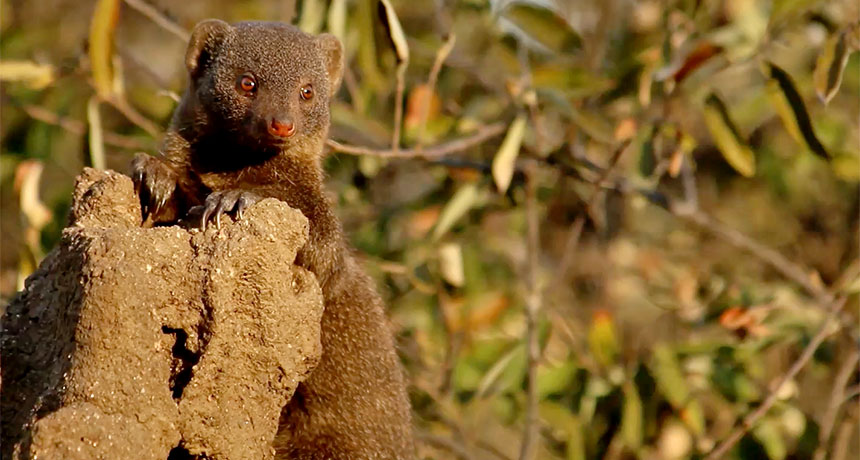Immigrants, they get the job done — eventually. Among dwarf mongooses, it takes newcomers a bit to settle into a pack. But once these immigrants become established residents, everyone in the pack profits, researchers from the University of Bristol in England report online December 4 in Current Biology.
Dwarf mongooses (Helogale parvula) live in groups of around 10, with a pecking order. The alphas — a top male and female — get breeding priority, while the others help with such group activities as babysitting and guard duty. But the road to the top of the social hierarchy is linear and sometimes crowded. So some individuals skip out on the group they were born into to find one with fewer members of their sex with which to compete —“effectively ‘skipping the queue,’” says ecologist Julie Kern.
Kern and her colleague Andrew Radford tracked mongoose immigration among nine packs at Sorabi Rock Lodge Reserve in Limpopo, South Africa. The researchers focused on guard duty, in which sentinels watch for predators and warn foragers digging for food.
Dwarf mongoose packs gain about one member a year. Among pack animals, higher group numbers are thought to come with the benefit of better access to shared social information like the approach of prowling predators. But upon arrival, new individuals are less likely to pitch in and serve as sentinels, Kern and Radford found. One possible reason: Immigrants lose weight during their transition from one pack to another and may not have the energy required for guard duty.
Pack residents don’t exactly put out a welcome mat for strangers, either. On the rare occasions when newcomers take a guard shift, residents tend to ignore their warning calls. Newbies may be seen as less reliable guards, or packs may have signature alarm calls that immigrants must learn. But after five months, these immigrants have come far. “Given time to recuperate following dispersal and a period of integration,” Kern says, “they contribute equally to their new group.”